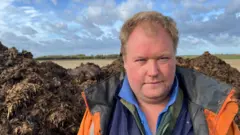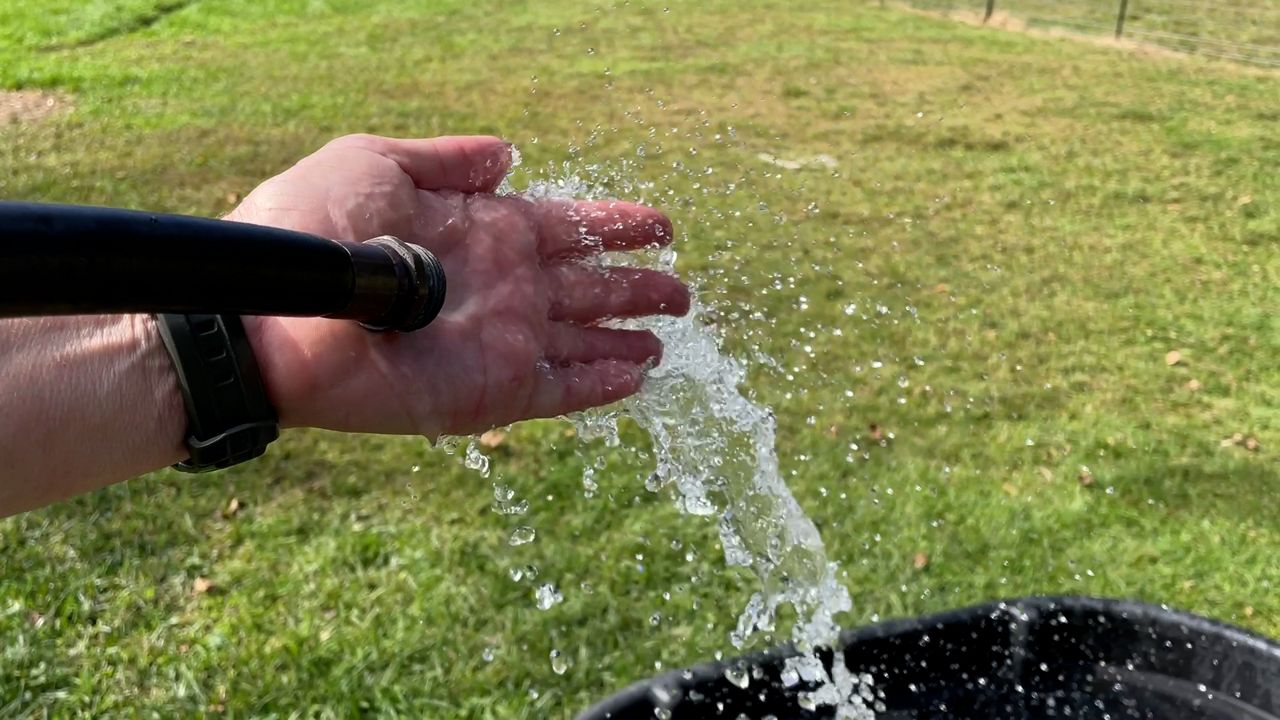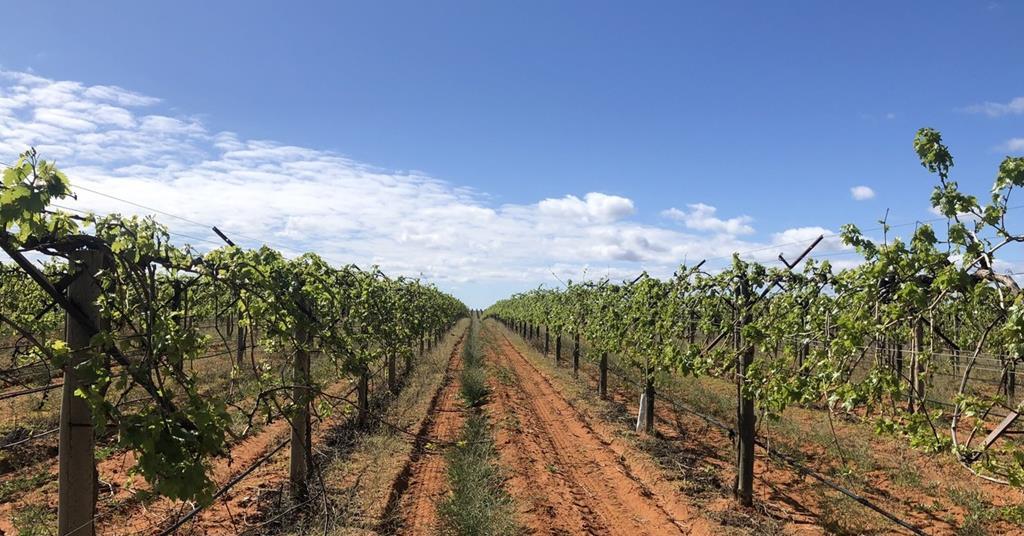People are going mad for manure, says Ely farmer after fundraiser – BBC

Community-Led Agricultural Initiative Advances Multiple Sustainable Development Goals
Introduction
A charitable initiative led by the Soham Young Farmers (SYF) in Cambridgeshire demonstrates a practical application of circular economy principles that align with several United Nations Sustainable Development Goals (SDGs). The annual “muck haul” project involves collecting donated farm manure and selling it to local gardeners and allotment holders, with all proceeds directed to charitable causes. This year, the initiative has seen unprecedented demand, highlighting a growing community engagement with sustainable agricultural practices.
Analysis of the Initiative’s Contribution to SDGs
Promoting Sustainable Agriculture and Food Security (SDG 2 & SDG 15)
The project directly contributes to creating sustainable food production systems and protecting terrestrial ecosystems by improving soil health.
- Enhancing Soil Fertility: By promoting the use of well-rotted manure, the initiative supports natural methods of soil conditioning. This aligns with SDG 15 (Life on Land), specifically Target 15.3, which aims to combat land degradation and restore soil health. The National Allotment Society confirms that manure improves soil structure, adds vital nutrients, and increases moisture retention.
- Supporting Local Food Production: The manure is primarily purchased by allotment holders, directly supporting local and small-scale food production. This contributes to SDG 2 (Zero Hunger) and Target 2.4, which focuses on implementing resilient agricultural practices that increase productivity and help maintain ecosystems.
Fostering a Circular Economy and Responsible Production (SDG 12)
The “muck haul” serves as a model for responsible consumption and production by transforming agricultural by-products into a valuable resource.
- Waste Valorisation: The initiative repurposes manure that might otherwise be a waste management challenge, embodying the principles of a circular economy. This directly addresses SDG 12 (Responsible Consumption and Production) and its goal of substantially reducing waste generation through recycling and reuse (Target 12.5).
- Sustainable Inputs: The use of natural manure and digestate from an anaerobic digester provides a sustainable alternative to synthetic chemical fertilizers, reducing the environmental impact associated with their production and use.
Strengthening Community Resilience and Partnerships (SDG 11 & SDG 17)
The success of the initiative is built on strong local collaboration, fostering a sustainable and resilient community.
- Community-Led Action: As an enterprise run by a youth farming organisation, the project empowers young people and strengthens local community bonds, contributing to SDG 11 (Sustainable Cities and Communities).
- Multi-Stakeholder Partnerships: The project is a clear example of SDG 17 (Partnerships for the Goals), involving collaboration between local farmers, the SYF, community members, and charitable organisations (Farming Community Network and The Brain Tumour Charity).
Supporting Health and Well-being (SDG 3)
The initiative’s charitable dimension provides direct support for community health outcomes.
- Charitable Fundraising: All funds raised are donated to organisations focused on health and community support, directly contributing to SDG 3 (Good Health and Well-being).
- Promoting Healthy Lifestyles: By supplying a key resource for gardening, the project indirectly encourages physical activity and the consumption of locally grown, fresh produce.
Key Outcomes and Observations
The operational success of the 2024 “muck haul” provides key data points on community engagement with sustainable practices.
- Increased Demand: An unprecedented 25 trailer loads of manure have been sold, a substantial increase from previous years, indicating heightened public interest in natural soil conditioners.
- Effective Fundraising: The initiative has raised over £1,500, with an objective to reach £2,000, demonstrating a successful model for community-based charitable enterprise.
- Resource Mobilisation: The project effectively utilises locally available resources, including horse manure, cow manure, and digestate from an anaerobic digester, showcasing efficient resource management.
- Expert Endorsement: The National Allotment Society has validated the agricultural benefits of the manure, particularly its role in restoring soil fertility and resilience following dry weather conditions.
Analysis of Sustainable Development Goals in the Article
1. Which SDGs are addressed or connected to the issues highlighted in the article?
-
SDG 2: Zero Hunger
- The article discusses the use of manure to improve soil fertility for allotments and gardens. This directly supports sustainable agriculture and food production at a local level, as healthy soil leads to better crop yields. The National Allotment Society’s comments on manure supporting “strong root growth” and setting up “plots for a productive season ahead” reinforce this connection.
-
SDG 3: Good Health and Well-being
- The initiative raises money for charities, specifically naming “The Brain Tumour Charity.” This directly contributes to supporting health services and research, aligning with the broader goal of ensuring healthy lives.
-
SDG 11: Sustainable Cities and Communities
- The article highlights a community-led initiative by the Soham Young Farmers (SYF). This action strengthens community bonds and promotes local, sustainable practices within the community. It also showcases positive links between rural areas (farmers donating manure) and local communities (allotment holders and gardeners).
-
SDG 12: Responsible Consumption and Production
- The core of the article is about repurposing manure, an agricultural by-product, into a valuable resource for soil conditioning. This is a clear example of a circular economy principle, reducing waste and promoting the efficient use of natural resources. The mention of using digestate from an anaerobic digester further emphasizes the focus on sustainable production patterns.
-
SDG 15: Life on Land
- The article explicitly details how manure helps to restore soil health. Phrases like “revitalises tired soils,” “restoring fertility and resilience,” and improving “soil structure” directly address the goal of halting and reversing land degradation and improving soil quality, especially after a “dry year.”
-
SDG 17: Partnerships for the Goals
- The “muck haul” is a collaborative effort. It involves a partnership between the Soham Young Farmers, local farmers who donate the manure, and the charities that receive the proceeds. This demonstrates a local, civil society partnership working towards common goals.
2. What specific targets under those SDGs can be identified based on the article’s content?
-
Target 2.4: By 2030, ensure sustainable food production systems and implement resilient agricultural practices that increase productivity and production, that help maintain ecosystems… and that progressively improve land and soil quality.
- The use of manure to create “rich, fertile” soil for allotments directly supports resilient agricultural practices and improves soil quality for food production.
-
Target 12.5: By 2030, substantially reduce waste generation through prevention, reduction, recycling and reuse.
- The initiative takes manure, which could be considered agricultural waste, and reuses it as a valuable product. The article states local farmers “donate manure they would normally be using on their own crops,” implying this surplus is being effectively recycled into the community.
-
Target 15.3: By 2030, combat desertification, restore degraded land and soil… and strive to achieve a land degradation-neutral world.
- The National Allotment Society’s statement that manure is “invaluable for restoring fertility and resilience” after a dry year and that it “revitalises tired soils” directly aligns with the goal of restoring degraded land and soil.
-
Target 17.17: Encourage and promote effective public, public-private and civil society partnerships.
- The collaboration between the Soham Young Farmers (a civil society group), local farmers (private individuals/businesses), and charities is a perfect example of the type of local partnership this target aims to promote.
3. Are there any indicators mentioned or implied in the article that can be used to measure progress towards the identified targets?
-
Indicator for Target 12.5 (Waste Reduction/Reuse):
- Volume of manure repurposed: The article provides specific figures that can be used as indicators, such as the sale of “25 trailers full” of manure and individual “20kg (44lbs) bag[s]”. This quantifies the amount of waste being diverted and reused.
-
Indicator for Target 15.3 (Land Restoration):
- Qualitative improvement in soil health: While not a formal metric, the article provides descriptive indicators of progress. The National Allotment Society’s praise for manure’s ability to “improved soil structure, added valuable nutrients, and helped retain moisture” serves as a qualitative measure of soil restoration.
-
Indicator for Target 17.17 (Partnerships):
- Funds raised through partnership: The article explicitly states the financial outcome of the collaboration, noting, “We have raised over £1,500 already for our chosen charities and hope to hit the £2,000 mark.” This amount is a direct indicator of the partnership’s effectiveness.
4. Summary Table of SDGs, Targets, and Indicators
| SDGs | Targets | Indicators |
|---|---|---|
| SDG 2: Zero Hunger | 2.4: Ensure sustainable food production systems and resilient agricultural practices that improve land and soil quality. | Use of manure by allotment holders to achieve “rich, fertile” soil for a “productive season ahead.” |
| SDG 3: Good Health and Well-being | (Implied) Support for health-related causes. | Donation of funds to The Brain Tumour Charity. |
| SDG 11: Sustainable Cities and Communities | (Implied) Strengthen community action and rural-urban linkages. | A community group (Soham Young Farmers) organizing an event for local gardeners and allotment holders. |
| SDG 12: Responsible Consumption and Production | 12.5: Substantially reduce waste generation through recycling and reuse. | Volume of manure sold and repurposed (“25 trailers full” and “20kg bags”). |
| SDG 15: Life on Land | 15.3: Restore degraded land and soil. | Qualitative descriptions of soil improvement: “revitalises tired soils,” “restoring fertility and resilience.” |
| SDG 17: Partnerships for the Goals | 17.17: Encourage and promote effective civil society partnerships. | Funds raised (£1,500+) through the collaboration between farmers, a youth group, and charities. |
Source: bbc.com
What is Your Reaction?
 Like
0
Like
0
 Dislike
0
Dislike
0
 Love
0
Love
0
 Funny
0
Funny
0
 Angry
0
Angry
0
 Sad
0
Sad
0
 Wow
0
Wow
0



















































.jpg.webp?itok=0ZsAnae9#)

























